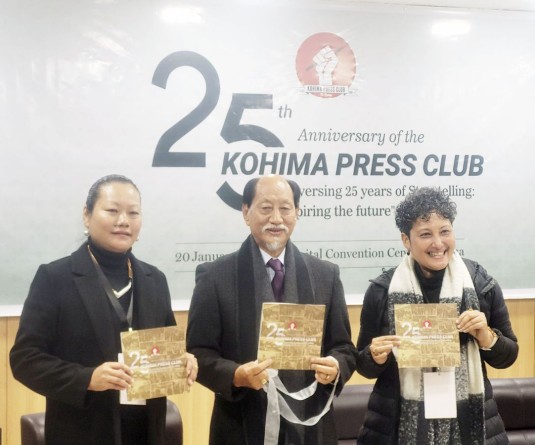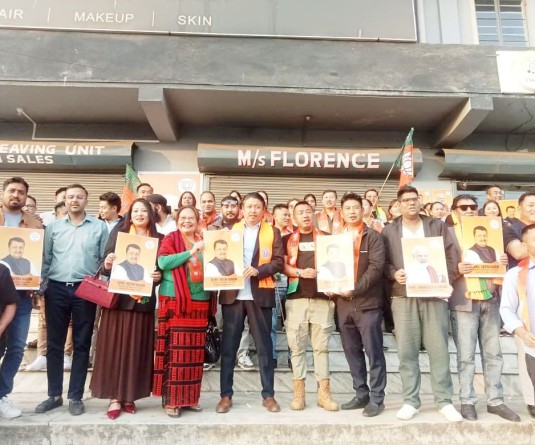Lidi Kro-u has been endeavouring to promote and preserve Naga traditions and cultures through various programmes and training activities for children. (Photo Courtesy: Albert Rutsa)
.jpg)
Initiative of Lidi Kro-u Society to preserve culture and tradition
Morung Express News
Kohima | December 5
“The Second World War, which stretched over 7 years reached even Kohima, a remote corner in the world map and fierce battles fought ceaselessly for 64 days at Kohima from 4 April to 6 June, 1944,” began Medoselhou Keretsü, former Village Chairman of Kohima Village, which is also widely known as the second largest village in Asia.
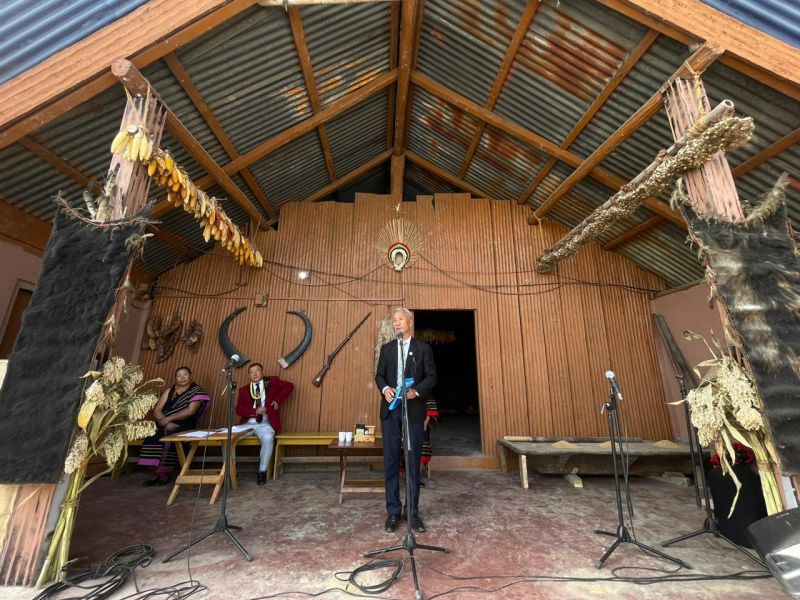
He was narrating the historical significance of ‘Ketsiezou’, which is the highest point in Kohima village, and also significantly chosen as the venue by the Lidi Kro-u Society to carry out their primary objective of storytelling and passing on the rich traditional knowledge to the young generation of Nagas besides tourists who may be intrigued to learn a bit of the Naga tradition.
During the brief but crucial period of the War, Medoselhou Keretsü further related that the people of this village faced untold miseries with the rest of the world. Highlighting that the invasion of the Japanese imperial army in India was checked here at Kohima in their march to Delhi by the allied forces, he enlightened that, “the Battle of Kohima was therefore extraordinary in the sense that not once did anyone envision a battle in a place as remote as this from the Japanese forces.”
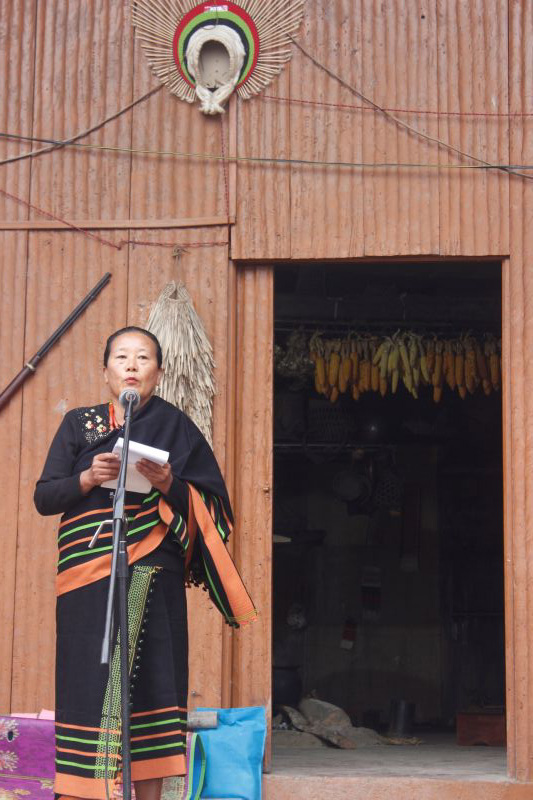
As a consequence, he went on to say that “no preparation was made for a battle let alone a fierce and monumental one” leading to a hand-to-hand combat between the half-starved Japanese Imperial Army and the ill prepared and inexperienced garrison of Kohima. In fact, he added, “about a thousand non-combatant staff including cooks and drivers had to be dragged in defence of the enemy.”
While the people of Kohima village had to flee to the dense forest and fields to hide from the war, he reminded that regardless, many innocent lives were lost in the crossfire. Moreover on the return after the war, he recounted that the entire village was found deserted.
“All houses and granaries were burnt down to ashes; all livestock vanished and the entire village was now a minefield only. The consequences of the war, was paid dearly by the villagers”, he related. Further highlighting that though the Japanese Imperial Army was defeated, he stated that the Allied forces had their share of fatalities. This epitaph, referring to the highest point in Kohima—Ketsiezou, “was therefore erected by the Royal Queen of England to commemorate the brave soldiers of Cameroon Highlanders who had fallen in the Battle of Kohima.”
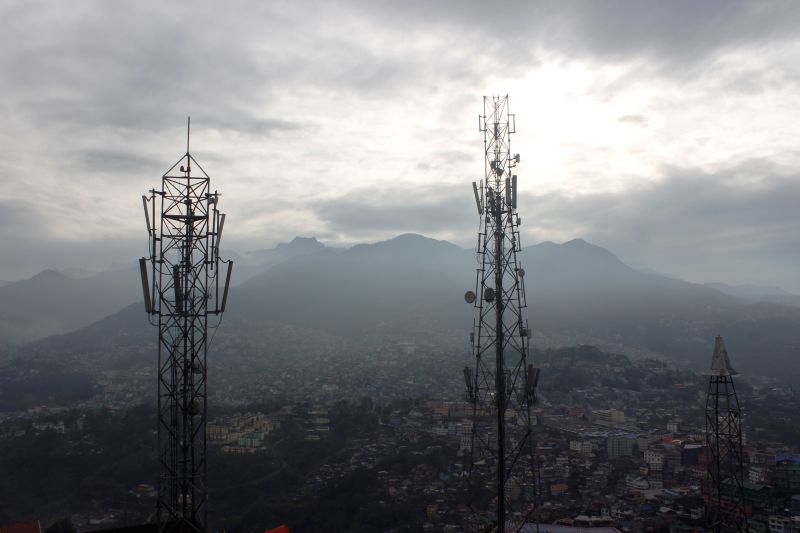
This was the kind of stories that were shared under the initiative of the Lidi Kro-u Society, comprising of Neisakuonuo Solo, (President), Neilhounuo Rame, Zetseilhounuo Whourie, Vivonguü Whourie, Vilazonuo Rutsa, Vizosienuo Belho, Neizoviü Sekhose and Kelhoulenuo Keyho.
Imparting traditional education
Established in the year 2012, Lidi Kro-u Society is driven by their passion to pass on the rich traditional knowledge through different activities including storytelling, bamboo crafts, weaving, rice pounding, folk songs and dance, etc.
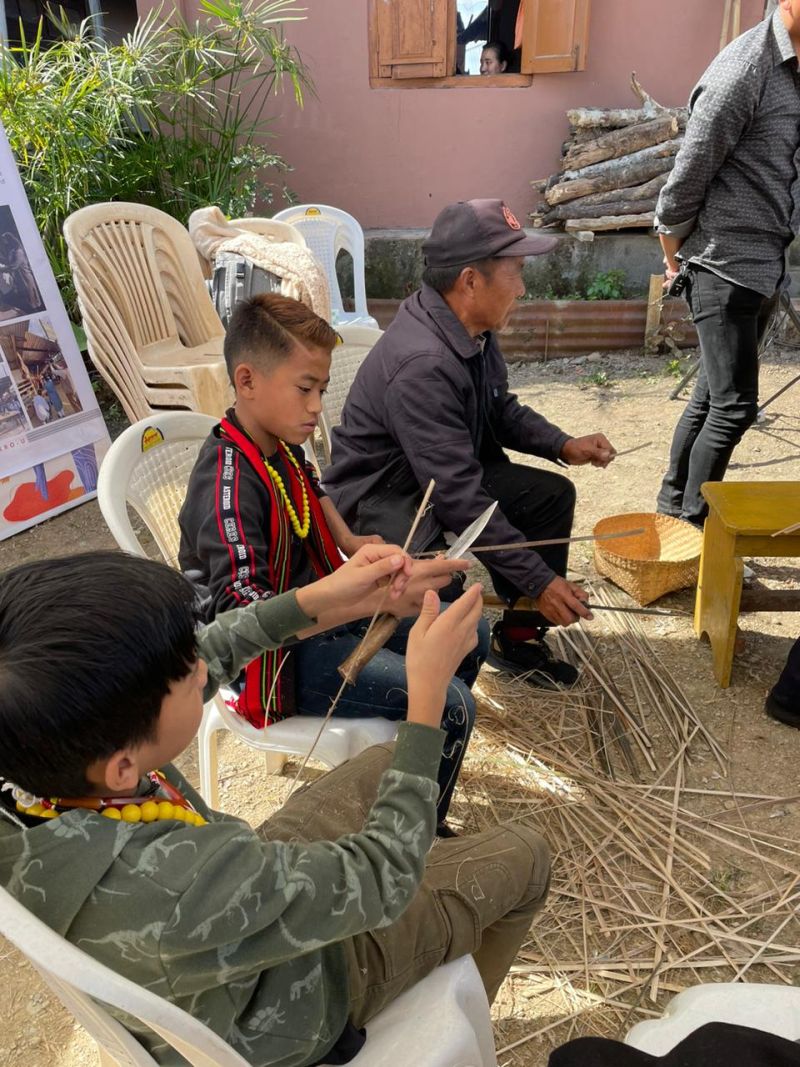
While Lidi Kro-u has been endeavouring to promote and preserve Naga traditions and cultures through various programmes and training activities for children as well as young people since its inception, this is the third year that the Society has exclusively dedicated a couple of days during the Hornbill Festival to impart traditional education to young people.
This year’s edition was held from December 4-5 while there will be a screening of “Thejanuo- The Musical” besides “learning the art of making Muodi” on December 8 from 10:00 am onwards.
Speaking to The Morung Express on Tuesday afternoon, Neizoviü Sekhose, Vice President and Kelhoulenuo Keyho, Secretary reiterated that our rich traditions are fast fading and before it completely disappears, they urged the need to pass it on to the younger generations.
Storytellers on December 5 comprised of two elderly from the village including Viluo Rutsa and Er Vikuolie Zatsu, who shared elderly wisdom and sayings and also dwelt on the traditional taboos of the Angami Nagas.


